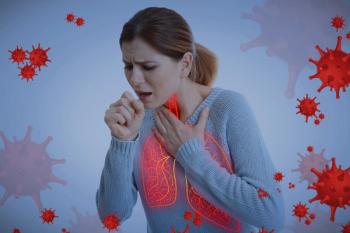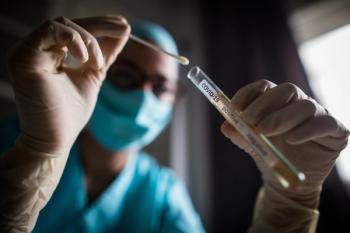
Pharmacists Are Key Players in Improving Vaccination Rates During Pandemic
The combined landscape of flu and COVID-19 presents challenges to vaccine uptake.
Under normal circumstances, pharmacists are a critical component of vaccine uptake, as well as a trusted resource for patients looking to gain information and make informed decisions about the risks and benefits of vaccination. Now, with the “twindemic” of the coronavirus disease 2019 (COVID-19) and influenza season underway, the pharmacy workforce, more than ever, are positioned to support vaccine uptake of flu and COVID-19 vaccines.
Last March, the US began lockdown measures and stay-at-home orders to protect the public from COVID-19 exposure. Even as restrictions slowly lifted, many Americans continued to avoid potential exposure in their social distancing efforts, which has led to decreased uptake of routine vaccinations.
A virtual session presented at the National Community Pharmacists Association (NCPA) 2020 Annual Convention held online October 18-20 tackled the effect that COVID-19 has had on vaccination rates in the United States and how pharmacists can aid in improving uptake.
The Impact of COVID-19 on Routine Vaccination
David Ha, PharmD, BCIDP, infectious diseases and antimicrobial stewardship pharmacist at Stanford Health Care, discussed the combined landscape of influenza and COVID-19 vaccination amid the pandemic and 2020-2021 flu season.
Ha explained that following the national emergency declaration on March 13, 2020, the CDC released several guidance documents highlighting pharmacies as a vital part of the health care system, as their ability to function during the pandemic is critical. However, the early recommendations included postponing and rescheduling receiving immunizations: “Suffice to say, regardless of the age group, there was a dramatic decline in pediatric and adult vaccination,” Ha said during his presentation.
This decline was documented in a CDC report published in May, in which CDC officials identified a notable decrease in routine pediatric vaccine ordering and doses administered following the national emergency declaration.2 In August, the Department of Health and Human Services made an effort to expand access by authorizing all state-licensed pharmacists the ability to order and administer childhood vaccinations during the pandemic.3
COVID-19 and Flu Season
Ha also discussed the similarities and differences of influenza and COVID-19 infections, outlined below:
Similarities:
- Transmission through respiratory droplets
- Clinical manifestations
- Group at high risk for infection include advanced age, obesity, multiple comorbidities such as diabetes, and individuals in nursing homes
Differences:
- Infectivity, as COVID-19 is much more contagious
- Mild or asymptomatic in pediatrics for COVID-19, compared with more severe illness in pediatric patients with influenza
In describing the similarities and differences between COVID-19 and influenza, Ha mentioned the significance of similar transmission methods, as both viruses are transmitted through respiratory droplets. “This is particularly important because, potentially, some of the infection prevention strategies that we’re using to prevent the spread of COVID-19 may also secondarily work against influenza,” Ha said.
In expanding on the differences, Ha also explained that COVID-19 being more contagious than influenza may change, since the data is based on nonpharmacologic intervention, infection prevention measures, and vaccinations.
Interestingly, in Ha’s presentation of the South Hemisphere’s most recent influenza season, which aligned with the COVID-19 pandemic, the World Health Organization found very little confirmed influenza during the time of COVID-19.
“There are a number of different hypotheses of why this could be the case. Perhaps the lockdown, sheltering in place, masking, and other types of transmission prevention practices in the Southern Hemisphere countries during that time prevented influenza transmission. Perhaps as well there was a drifting in terms of testing for influenza,” Ha said.
As for the Northern Hemisphere’s guidance for its 2020-2021 flu season, the core recommendations have stayed the same: everyone 6 months or older who doesn’t have a contraindication should be getting their flu vaccine.
The Pharmacist’s Role in COVID-19 Vaccination
Jeff Goad, PharmD, MPH, FAPhA, FCPhA, FCSHP, professor and chair in the Department of Pharmacy Practice at the Chapman University School of Pharmacy in Orange, California, homed in on the opportunities and responsibilities for pharmacists amid the pandemic, citing several reasons why “pharmacy is critical and an important player in immunizations, both now and in the future,” he said.
Goad introduced the following topics for exemplifying pharmacists’ key role in COVID-19 vaccine distribution and uptake:
- Authorized to vaccinate
- Workforce
- Access
- Storage
- Existing immunization patient relationship
- Vaccine confidence
- Documentation
“The government, the public-private partnerships, everyone is counting on pharmacy to be a major hub for distribution of the vaccine to a very large population,” Goad said during his presentation.
Pharmacists are critical players for the COVID-19 vaccine due to the massive workforce they can provide to the vaccination effort. On top of the 300,000 licensed pharmacists working in both the chain and community settings, there are also more than 62,000 student pharmacists and interns.
In addition to the sheer number of pharmacists able to administer vaccinations to the American public, pharmacists are also more accessible: 86% of the US population lives within 5 miles of a pharmacy. “A unique aspect of pharmacy that is probably going to be very important in fitting in to the lives of Americans who have to get 2 doses of a coronavirus vaccine in very short order is the ability to access those services when they want it,” Goad said, clarifying that pharmacies are often open on weekends, holidays, and later into the evening, and sometimes 24 hours a day.
Goad also presented the trend that individuals are increasingly trusting pharmacists to administer their vaccines; physicians, including all specialties, administer 34% of flu vaccinations in the US, and pharmacies administer 32%.
The presentation also touched upon the COVID-19 vaccines most likely to be authorized for distribution to the public in the United States, notably Moderna’s and Pfizer’s respective mRNA vaccines. Both will be administered in 2 doses; however, although Moderna’s vaccine requires storage at normal freezer temperatures (-20°), Pfizer’s vaccine must be stored at -70°, creating a challenge for the majority of pharmacies. However, Goad stressed that the stability data is always evolving, so paying attention to developments is key.
“Innovation always rules the day, and we have seen ultracool units being developed and potentially might be a part of vaccine distribution to eliminate the need to purchase an ultracool freezer. Stay tuned, things change fast here,” he qualified.
Although storage temperatures could potentially create a challenge for pharmacies, according to Goad, “the toughest battle is vaccine confidence.”
Goad pointed to a Gallup survey from August 7, 2020, which reported that 1 in 3 Americans would not get the COVID-19 vaccine.
According to Goad, myths are deadly to vaccine efforts, and pharmacists have the responsibility to address myths and provide accurate information to their customers.
“These are some of the things we need to stop right away, so that people get the correct information and can make an informed decision about the risks and benefits of vaccination. that’s our job and that’s our mission as pharmacy.”
References:
- Goad J, Ha D. What Impact did COVID-19 have on vaccination rates and how can I help improve them? Presented at: NCPA 2020 Annual Convention; online; October 18-19, 2020.
- Santoli JM, Lindley MC, DeSilva MB, et al. Effects of the COVID-19 pandemic on routine pediatric vaccine ordering and administration – United States, 2020. Morbidity and Mortality Weekly Report. May 15, 2020. http://dx.doi.org/10.15585/mmwr.mm6919e2
- HHS expands access to childhood vaccines during COVID-19 pandemic. News release. HHS; August 19, 2020. Accessed October 23, 2020. https://www.hhs.gov/about/news/2020/08/19/hhs-expands-access-childhood-vaccines-during-covid-19-pandemic.html
Newsletter
Pharmacy practice is always changing. Stay ahead of the curve with the Drug Topics newsletter and get the latest drug information, industry trends, and patient care tips.






































































































































